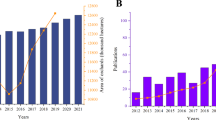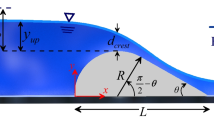Abstract
With a given grinding system, surface roughness of the ground workpiece depends mainly on the settable grinding parameters and is also inevitably influenced by some random factors during grinding. Based on the relevance vector machine, which can effectively avoid over-fitting and can also present a fast prediction, a model is proposed for predicting the surface roughness of ground parts. In the model, the grinding parameters are considered as the static features, and some features of the random vibration signal work as the dynamic features. The static and dynamic features compose a feature vector together, which is used as the input variable of the model to predict the surface roughness. A series of experiments were carried out to validate the model and the results show that for the particular grinding system and conditions in this work, when the width parameter of kernel function is set to 100 and all features are normalized on 100, both the predicted surface roughness and its variation trend are close to the measured values. It can be inferred that the model generates a precise prediction only when the width parameter and normalization parameter match the given grinding system and conditions.
Similar content being viewed by others
References
Jiang J, Ge P, Hong J (2013) Study on micro-interacting mechanism modeling in grinding process and ground surface roughness prediction. Int J Adv Manuf Technol 67(5–8):1035–1052
Chakrabarti S, Paul S (2008) Numerical modelling of surface topography in superabrasive grinding. Int J Adv Manuf Technol 39(1–2):29–38
Nguyen TA, Butler DL (2005) Simulation of surface grinding process, part 1: generation of the grinding wheel surface. Int J Mach Tools Manuf 45(11):1321–1328
Nguyen TA, Butler DL (2005) Simulation of surface grinding process, part 2: interaction of the abrasive grain with the workpiece. Int J Mach Tools Manuf 45(11):1329–1336
Agarwal S, Rao PV (2010) Modeling and prediction of surface roughness in ceramic grinding. Int J Mach Tools Manuf 50(12):1065–1076
Zhou X, Xi F (2002) Modelling and predicting surface roughness of the grinding process. Int J Mach Tools Manuf 42(8):969–977
Hecker PL, Liang SY (2003) Predictive modeling of surface roughness in grinding. Int J Mach Tools Manuf 43(8):755–761
Xiu S, Li C, Cai G (2005) Modification for theoretical model of ground surface roughness. J Northeast Univ (Nat Sci) 26(8):770–773
Alao AR, Konneh M (2012) Surface finish prediction models for precision grinding of silicon. Int J Adv Manuf Technol 58(9–12):949–967
Kwak JS, Sim SB, Jeong YD (2006) An analysis of grinding power and surface roughness in external cylindrical grinding of hardened SCM440 steel using the response surface method. Int J Mach Tools Manuf 46(3–4):304–312
Pal D, Bangar A, Sharma R, Yaday A (2012) Optimization of grinding parameters for minimum surface roughness by Taguchi parametric optimization technique. Int J Mech Ind Eng 1(3):74–78
Aguiar PR, Cruz CED, Paula WCF (2008) Predicting surface roughness in grinding using neural networks. In: Advances in robotics, automation and control. Vienna, pp 33–44
Fredj NB, Amamou R (2006) Ground surface roughness prediction based upon experimental design and neural network models. Int J Adv Manuf Technol 31(1–2):24–36
Krajnik P, Sluga A, Kopac J (2006) Radial basis function simulation and metamodelling of surface roughness in centreless grinding. J Achiev Mater Manuf Eng 14(1–2):104–110
Ali YM, Zhang LC (1999) Surface roughness prediction of ground components using a fuzzy logic approach. J Mater Process Technol 89–90:561–568
Aurtherson PB, Sundaram S, Shanawaz AM, Prakash MS (2011) Grinding process on AlSic composite material and optimization of surface roughness by ANFIS. Int J Eng Technol 3(4):425–430
Samhouri MS, Surgenor BW (2005) Surface roughness in grinding: on-line prediction with adaptive neuro-fuzzy inference system. Trans NAMRI/SME 33:57–64
Sun L, Yang S (2009) Prediction for surface roughness of profile grinding and optimization of grinding parameters based on least squares support vector machine. J Mech Eng 45(10):254–260
Huang J, Wang L, Li G, Zhang X, Wang J (2010) Prediction system of surface roughness based on LS-SVM in cylindrical longitudinal grinding. Opt Precis Eng 18(11):2407–2412
Tipping ME (2000) The relevance vector machine. In: Advances in neural information processing systems, 12th edn. MIT Press, USA, pp 652–658
Subrahmanya N, Shin YC (2008) Automated sensor selection and fusion for monitoring and diagnostics of plunge grinding. J Manuf Sci Eng 130(3):1–11
Bishop CM (2006) Relevance vector machines. In: Pattern recognition and machine learning. Springer, pp 345–358
Tipping ME, Faul AC (2003) Fast marginal likelihood maximisation for sparse Bayesian models. In: Proceedings of the Ninth International Workshop on Artificial Intelligence and Statistics. Key West, pp 1–13
Author information
Authors and Affiliations
Corresponding author
Rights and permissions
About this article
Cite this article
Guo, J. Surface roughness prediction by combining static and dynamic features in cylindrical traverse grinding. Int J Adv Manuf Technol 75, 1245–1252 (2014). https://doi.org/10.1007/s00170-014-6189-5
Received:
Accepted:
Published:
Issue Date:
DOI: https://doi.org/10.1007/s00170-014-6189-5




